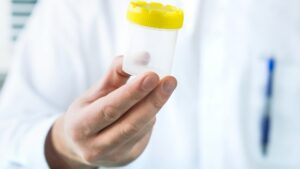No sperm count success stories | From 0 to Millions of Sperms
There are a lot of people who suffer from Azoospermia. However, they might feel discouraged. Therefore we’ve chosen to share No sperm count success stories.
No sperm count success stories | From 0 to Millions of Sperms
(OAT)
Azoospermia is an infertility disease in which men do not produce sperm. It is estimated to be the root of infertility in 15% of all infertile men while only affecting 1%.
As long as the underlying illness isn’t addressed and cured, these guys won’t use their semen to make their spouse pregnant. As a last resort, using a sperm donor may be possible if everything else fails.
There are three main types of Azoospermia:
Pretesticular Azoospermia:
Testicles seem normal, but sperm production is absent. It’s a rare condition caused by low hormone levels or adverse chemotherapy effects.
Testicular Azoospermia:
It is impossible to produce sperm in the usual way when the testicles have been harmed. Epididymitis and urethritis are two common reproductive system infections that may cause testicular hyperplasia.
Viral orchitis, which causes a testicular enlargement in children, can also cause this condition. Another possible cause is an injury to the groin region, cancer or cancer treatments like radiation, or a genetic disorder like Klinefelter’s syndrome.
Post-testicular Azoospermia:
In cases where the testicles produce normal sperm, but something prevents it from exiting the body, such as a vasectomy or a blockage in the tubes that transport the sperm from the testicles to the penis (known as obstructive Azoospermia), anovulatory insufficiency is known as anovulatory incompetence Around 40% of guys with Azoospermia are affected by the post-testicular variation.

Medical history and physical and blood tests are also used to assess hormone levels in the case of infertility. Vas deference blockage may be detected by scrotal or transrectal ultrasonography if hormone levels are normal (s).
To confirm the diagnosis, an MRI may be utilized. In some instances, surgery is the only way to discover a problem. Genetic testing is essential to uncover inherited issues if no obstruction is detected.
Sperm retrieval is performed on men who have non-obstructive Azoospermia or a blockage but do not want surgical intervention. Using a very tiny needle, sperm is taken directly from the testicle and stored in a bank for future use in treatment.
Treatment Suggested by Doctor Omar Chughtai, Fertility Specialist
If required, the patient was instructed to retrieve motile sperm from his ejaculate or undergo a testicular aspiration. They were told to continue with ICSI after exposing the sperm to HOS and selecting the motile sperm.
Hypo Osmotic Swelling (HOS) Test
Tests like the hypo-cosmic swelling (HOS) test, which examines the plasma membrane of the sperm for structural integrity, have just been developed in the last few years. Sperm quality may be better managed using this great sperm indicator tool.
Intracytoplasmic Sperm Injection (ICSI)
Injecting a single sperm cell straight into an egg’s cytoplasm is called intracytoplasmic sperm injection. Using this approach, these embryos may then be put into a mother’s uterus.
The fertilization rate achieved is the most critical metric for assessing ICSI performance. Depending on the species, fertility rates might be as high as 80% to 85%. A single sperm is inserted into an oocyte’s cytoplasm during this technique (egg).
It is possible to get a high-quality sample of sperm, as well as an extraordinarily high fertilization rate, by using numerous techniques to remove low-quality sperm and then purifying it.

Successful Treatment Outcome
Once the sperm sample was collected, it was washed using the aspiration procedure. Using the ICSI procedure, the HOS-positive sperm was injected into the cytoplasm of the female partner’s twenty eggs that had been removed.
Two blastocysts were formed after the fertilization of nine of the eggs. The woman’s uterus received both blastocysts. In a second pregnancy, the couple had twins. Everything went according to plan throughout the pregnancy, and the couple was blessed with their very own set of biological siblings. ( No sperm count success stories )
